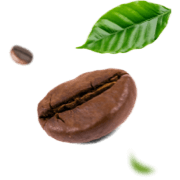Coffee Machines > Frequently Asked Questions
Frequently Asked Questions
Since the descaling steps are different depending on the machine model, we invite you to see the user manuals on following Machine Page:
- Remove and rinse the water tank.
- Fill the water tank up to the MAX level, using only fresh, still drinking water.
- Refit the tank.
- Plug the power cord into a power outlet socket.
- Press the on/brew switch to turn on the machine.
- Wait until the machine has completed the heating cycle. The machine is ready when the on/brew switch lights up with a steady light.
- Before brewing coffee, run at least one water tank of water through the appliance, without any capsules in the machine.
- Now you're ready to taste your blends using the capsules. Enjoy your coffee!
All of Lavazza's A Modo Mio coffee machines come with a certain period of warranty according local regulamentation. From the moment of purchase your Lavazza A Modo Mio coffee machine's warranty will immediately begin. The warranty can not be postphoned to activate at a later date.
Limescale formation is a normal occurrence when using your coffee machine and will result in reduced water flow or cold coffee. For this reason, you will need to descale the machine every three months or so, and in any case everytime the descaling light on the appliance is switched on (for machine models equipped with descaling alert). If you live in an area where hard water is prevalent, then the descaling maybe required to be completed more frequently. Lavazza assumes no responsibility for damage to the machine resulting from failure to descale.
To complete the descaling process, use a non-toxic and/or non-harmful type of descaling product for coffee machines, commonly available on the market.
Do not drink the descaling solution and liquids that have run through the machine until the cycle is complete.
Never use vinegar as a descaling agent.
- Use only Lavazza A Modo Mio or compatible capsules.
- Always place the machine on a flat, even surface.
- Only use cold, still, drinking water to fill the water tank; never use milk or other liquids.
- The appliance and accessories may become hot during operation. Only use the designated lever and allow the appliance to cool down before cleaning or storing.
- The appliance and accessories may become hot during operation. Only use the designated lever and allow the appliance to cool down before cleaning or storing.
- Do not keep the machine at a temperature below 5 ° C as frost could damage it. Do not use the coffee machine outdoors.
- Do not make technical modifications to the appliance.
- Do not touch the hot parts immediately after use of the appliance. When brewing coffee or milk, pay attention to any splashes of hot liquid.
- Before cleaning the machine, it is essential to unplug the power cord from the power outlet socket and wait for the machine to cool down. Do not dip the machine in water. Only wash in water the parts as stated in the manual.
- Do not let the power cable come into contact with the hot parts of the appliance
- Never leave the appliance unattended when it is connected to the mains
- Do not immerse the appliance in water or other liquids
- Do not exceed the maximum filling volume indicated on the appliance
- Do not use the appliance if the water tank has not been filled
- Do not use the same capsule more than once
- Only use official Lavazza A Modo Mio capsules in the appliance
- Do not use the appliance outdoors
- Only insert Lavazza A Modo Mio capsules or capsules compatible with Lavazza A Modo Mio System into the capsule compartment. Do not place your fingers or any other objects in the capsule compartment
- In the event of breakdowns immediately disconnect the plug from the socket. Do not operate a faulty machine
- Only Lavazza authorized service centers can carry out interventions and repairs
- In the event of repairs not carried out by authorized Lavazza centers, no liability is accepted for any damage
Corporate
Get more details at this link! At present, the training activities promoted by our Training Centre are reserved to professionals who use Lavazza products intended for restaurants and bars. If you already are a Lavazza customer, kindly let us have your personal data (company name, your name and surname, city and province of residence, telephone number, VAT number) through the B2B contact form link, so that a Lavazza representative can contact you and provide you with detailed information. However, we plan to extend access to our courses to our consumers: keep following us to stay up-to-date on our activities!
The sustainability strategy of the Lavazza Group is outlined in our Sustainability Manifesto “A Goal in Every Cup”, a policy statement inspired by the strong sense of corporate responsibility that the company has always felt toward the communities where it operates. Also check our Sustainability Balance is the main tool that we use to communicate the annual results of our efforts in the field of sustainability.
The Giuseppe and Pericle Lavazza Foundation NPO, established in 2004, promotes and carries out economic, social and environmental sustainability projects in favour of coffee producing communities the world over. The primary aim of the Lavazza Foundation is to help coffee producers improve the yield and quality of their products, through training on good farming practices and by fostering the development of their entrepreneurial skills. For further information we invite you to consult the relevant section of the Lavazza website.
Find out how to become one of our suppliers at this link.
Join Lavazza and grow with us. Check the currently open positions at this link.
Please submit your request here.
Industrial Compost > Coffee Taste and Storage Conditions
Frequent questions
Taste never changes: the new Lavazza BLUE Compostable Capsules are the perfect solution in order to taste your favourite espresso without compromise in terms of quality, combining excellence, sustainability and innovation, that are the drivers of our business model.
Yes it is; the unique in-cup profile of our blends is guaranteed in Lavazza BLUE Compostable Capsules thanks to the self protection technology that creates a barrier against oxygen and helps to preserve the aroma of coffee, its quality and ensures an excellent tasting experience for all 14 months of shelf life.
Shelf life is indicated on the outer pack, and it does not change once the box is opened since the Compostable BLUE capsule is self protected.
It is recommended to store them in cool and dry place.
Industrial Compost > Industrial Compostability
Frequent questions
Industrial composting plants process organic waste under controlled conditions, producing compost, that is a good soil fertilizer.
Customer must always check the local regulations about waste delivery. In case the separate collection of organic waste is not available, Lavazza BLUE Compostable Capsule must be thrown in the undifferentiated waste.
The body is made of a compostable bio-plastic, while the upper part (lid) is made of a multi-layer material, compostable as well.
Lavazza BLUE Compostable Capsules become compost in maximum 180 days, if correctly industrially composted. The whole process can be faster, depending on the characteristics of the industrial composting plant.
Industrial Compost > EU Standard and Certification
Frequent questions
The EU standard specifies how the complete biodegradation of a package must be demonstrated. This proof must be provided for all components of the packaging (e.g. labels, inks, adhesives). Only products that can be shown to comply with the EN 13432 standard may be labelled with the protected markings.
They have TUV AUSTRIA OK INDUSTIRAL COMPOST certification, in accordance to EN-13432 standard.
At the European level, TÜV Austria is specialised in certifications for compostability and is one of the best organisations in this field.
The European Norm about compostability of packaging (EN 13432) requires (besides a clear and detailed description of the product) 4 tests:
test on biodegradation (chemical break down of the polymer of fibres)
test on disintegration (physically falling apart of the product in small fragments)
test on ecotoxicity (test if the composted product does not exert any negative effect on plants)
test on heavy metals content









